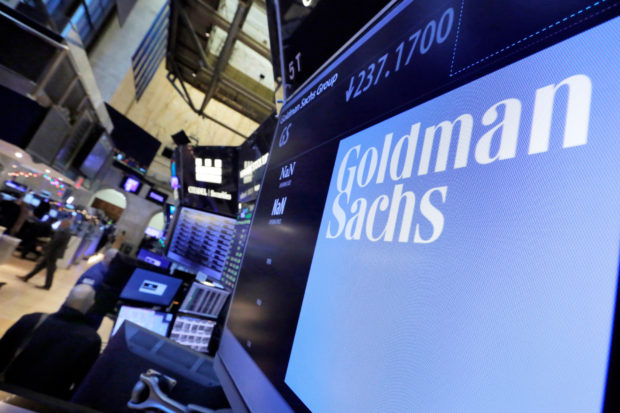
In this Dec. 13, 2016 file photo, the logo for Goldman Sachs appears above a trading post on the floor of the New York Stock Exchange. Goldman Sachs reports earnings on July 17, 2018. AP
NEW YORK — Lloyd Blankfein, Goldman Sachs’ chief executive officer and chairman, is announcing his retirement from the investment banking giant after 12 years at the helm.
Goldman said Tuesday that David Solomon, currently the bank’s president and chief operating officer, would be Blankfein’s successor. The announcement was expected, since Solomon had been moved into the second-in-command roles in recent months.
Blankfein ran Goldman through the financial crisis and Great Recession, presiding over a monumental shift in how investment banking works on Wall Street. While Blankfein navigated Goldman through the meltdown, competitors such as Lehman Brothers, Bear Stearns, and Merrill Lynch were bought or went bankrupt.
He will retire on Sept. 30.
Solomon is a long-time Goldman executive. He’s also known for being a DJ at parties as a hobby.
Meanwhile, the company’s profits jumped 44 percent in the second quarter compared with a year ago, driven by the investment bank’s core franchises: advising companies on mergers, acquisitions and other deals, and its trading business.
The New York-based bank said Tuesday that earnings reached $2.35 billion in the second quarter, compared with $1.63 billion a year earlier. On a per-share basis, Goldman earned $5.98 a share, compared with $3.95 a share a year earlier, beating analysts’ forecasts of $4.65 a share.
Nearly all of Goldman’s businesses saw double-digit growth in the second quarter. Trading was particularly strong. Goldman’s institutional client services division, which contains the firm’s trading operations, posted net revenues of $3.57 billion in the quarter, up 17 percent from a year earlier.
Goldman’s trading performance can be fickle, driven by whether the market was volatile that quarter and whether the right sort of securities saw the right sort of movement. Like its competitor Morgan Stanley, which will report results Wednesday, Goldman has been looking to diversify its businesses, moving in recent years into consumer lending and consumer banking.
Goldman’s investment banking business also had a solid quarter, posting net revenues of $2.05 billion, which is up 18 percent from a year earlier. The firm saw both higher underwriting revenue, as well as revenue for advisory services.
The firm’s return on equity ratio, a closely watched performance gauge for banks like Goldman Sachs which measures how much money the bank earned with the money investors have lent it, was 12.8 percent in the quarter. Banks like Goldman try to keep that figure above 10 percent.
Company-wide net revenues were $9.4 billion in the quarter, also beating analysts’ expectations.
Goldman shares fell 0.8 percent to $229.25 in premarket trading. /ee